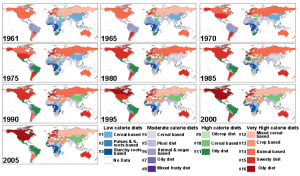Working Group II of the Intergovernmental Panel on Climate Change (IPCC) issued its contribution to the Fifth Assessment Report on March 31, 2014. The second of three “Summaries for Policymakers” (the first report from Working Group I on the physical science of climate change was issued in September 2013) addresses climate change impacts, adaptation and vulnerability, and says the effects of climate change are already occurring on all continents and across the oceans. The IPCC report explains that in many cases, the world is ill-prepared to deal with climate change risks and concludes that while there are opportunities to respond to such risks, these risks will be difficult to manage with high levels of warming.
The report, entitled Climate Change 2014: Impacts, Adaptation, and Vulnerability, is designed to guide global lawmakers as they devise policies to reduce emissions and make their infrastructure, agriculture and people more resilient to a changing climate. The report details the impacts of climate change to date, the future risks from a changing climate, and the opportunities for effective action to reduce risks. A total of 309 coordinating lead authors, lead authors, and review editors, drawn from 70 countries, were selected to produce the report. They enlisted the help of 436 contributing authors, and a total of 1,729 expert and government reviewers.
Observed impacts of climate change have already affected agriculture, human health, water supplies, ecosystems on land and in the oceans. One of the striking things is that observed impacts are occurring from the tropics to the poles, from small islands to large continents, and from the wealthiest countries to the poorest. The researchers documented how climate change affects everything from retreating glaciers in East Africa, the Alps, the Rockies and the Andes to the bleaching of corals in the Caribbean Sea and Australia’s Great Barrier Reef. Mussel-beds and migratory patterns for salmon are changing off the west coast of North America, grapes are maturing faster in Australasia and birds are flying to Europe earlier in the year. One of the IPCC’s starkest findings relates to water availability and food production. Where there was less certainty seven years ago about the potential damage to staple crops, the latest IPCC report found that global wheat and maize production are already being negatively impacted by warmer temperatures, with yields of wheat declining by about 2% per decade and those of maize by 1%. While he report does mention some positive impacts of climate change such as improved crop yields in southeastern South America, it also refers to “future risks and more limited potential benefits”.
Chris Field, co-chair of Working Group II, said the rising trajectory of greenhouse emissions is projected to lead to more than 3 degrees Celsius of additional warming this century. This is on top of the 0.85 degrees of warming already observed since 1880. UN treaty negotiators are aiming to limit the total rise to 2 degrees Celsius. The researchers wrote that economic losses accelerate with greater levels of warming, noting that little analysis has been done for levels of warming of 3 degrees Celsius beyond present temperatures. The report warns that this amount of additional warming would lead to “extensive biodiversity loss”.
The report concludes that responding to climate change involves making choices about risks in a changing world. The nature of the risks of climate change is increasingly clear, though climate change will also continue to produce surprises. It finds that risk from a changing climate comes from vulnerability (lack of preparedness) and exposure (people or assets in harm’s way) overlapping with hazards (triggering climate events or trends). Each of these three components can be a target for smart actions to decrease risk. In particular, adaptation can play a key role in decreasing these risks.
Field also said that: “Understanding that climate change is a challenge in managing risk opens a wide range of opportunities for integrating adaptation with economic and social development and with initiatives to limit future warming. We definitely face challenges, but understanding those challenges and tackling them creatively can make climate-change adaptation an important way to help build a more vibrant world in the near-term and beyond.”
Now the ball is in the policymakers’ court as industry and the public look to their governments to take decisive action and facilitate the implementation of creative solutions to meet the climate change challenge.
The third report from Working Group III (WGIII) of the IPCC will address climate change mitigation and is expected to be released in April 2014.
